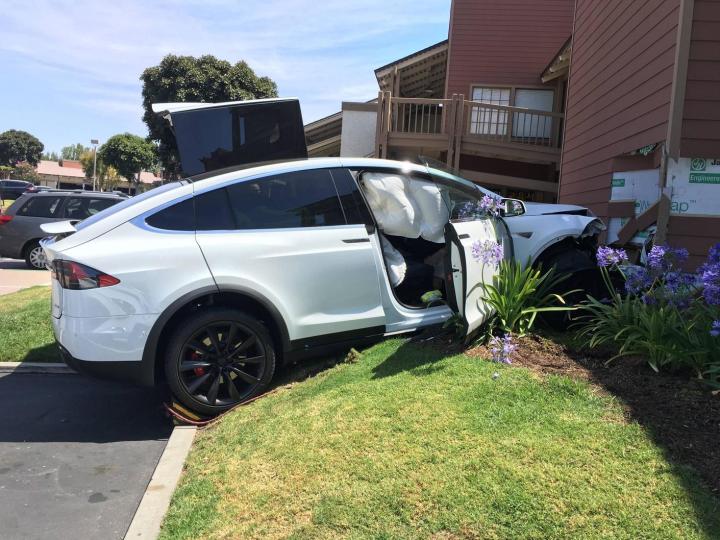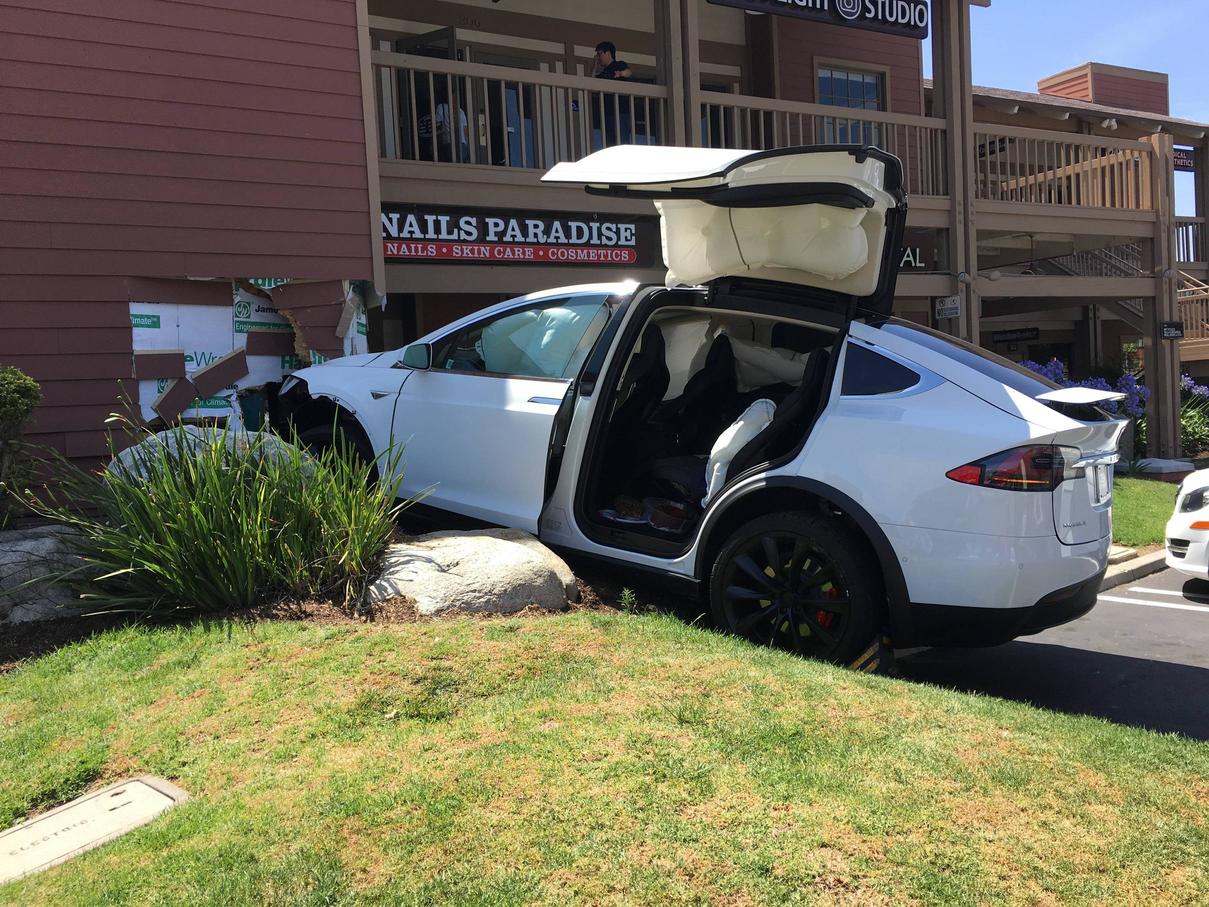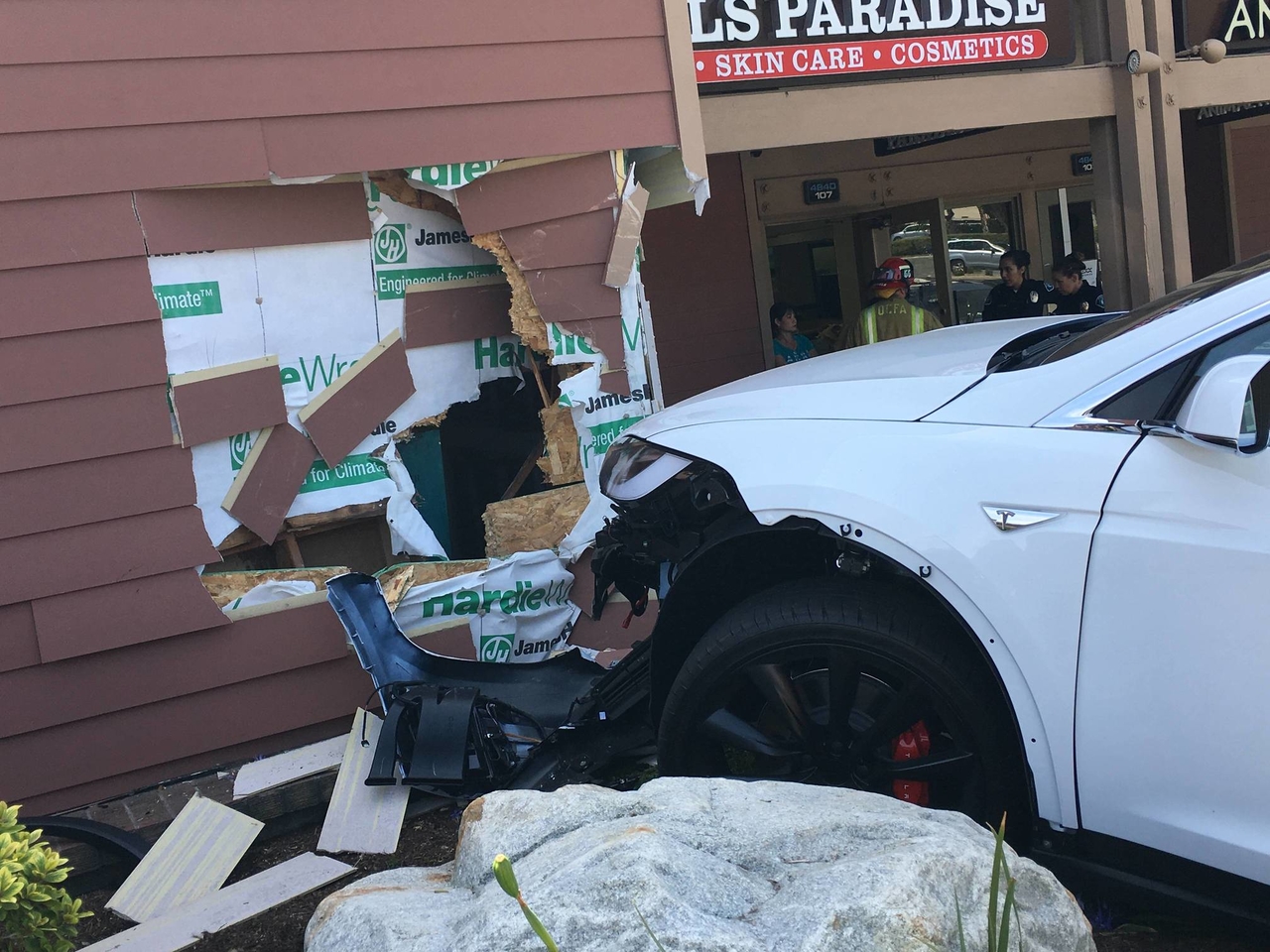
On June 6, Electrek reported that a five-day-old Model X collided with a building in Irvine, California. One of the owners — who goes by the name Puzant on the Tesla Motors forum — said the vehicle “unexpectedly accelerated at high speed on its own” before vaulting over planters and smashing into a shopping center. Because Tesla’s Autopilot system only activates over 18 mph, Puzant believed there was some sort of “software glitch or a computer malfunction.”
Tesla keeps intricate logs of how its vehicles are driven, however, and the details tell a very different story than Puzant’s account.
“We analyzed the vehicle logs which confirm that this Model X was operating correctly under manual control and was never in Autopilot or cruise control at the time of the incident or in the minutes before,” Tesla said in a statement. “Data shows that the vehicle was traveling at 6 mph when the accelerator pedal was abruptly increased to 100 percent. Consistent with the driver’s actions, the vehicle applied torque and accelerated as instructed. Safety is the top priority at Tesla and we engineer and build our cars with this foremost in mind. We are pleased that the driver is OK and ask our customers to exercise safe behavior when using our vehicles.”
The logs point to operator error in this instance, but it is worth noting that the data has not been publicly verified by a third party at this time. Shortly after Tesla’s statement was posted by Electrek, the Model X owner revealed that the vehicle was being driven by his wife at the time of the crash, but he maintains she was not at fault.
“My wife is a 45-year-old woman with a great driving record. Not an [sic] incapacitated driver. She has been going to that center for over 20 years and parking in the same stalls hundreds of times. She knows the difference between brake and accelerator pedal. I am waiting to hear from Tesla whether the accelerator pedal can be depressed by the car electronically similar to gas-powered cars’ pedal being depressed on their own while in cruise control.”
Read more: Tesla Model 3 performance, specs, and news
This story is still developing, so stay tuned for updates on what happens next. For a closer look at the crash, check out the video below by YouTube user Foggy Dogbreath.
Editors' Recommendations
- Tech giant reveals nice price for new EV to take on Tesla
- Tesla faces new rival as a tech giant launches its first EV
- Tesla Autopilot vs. full self-driving: What’s the difference?
- Tesla video shows off Cybertruck’s Basecamp tent attachment
- Tesla reveals target date for new electric vehicle launch




